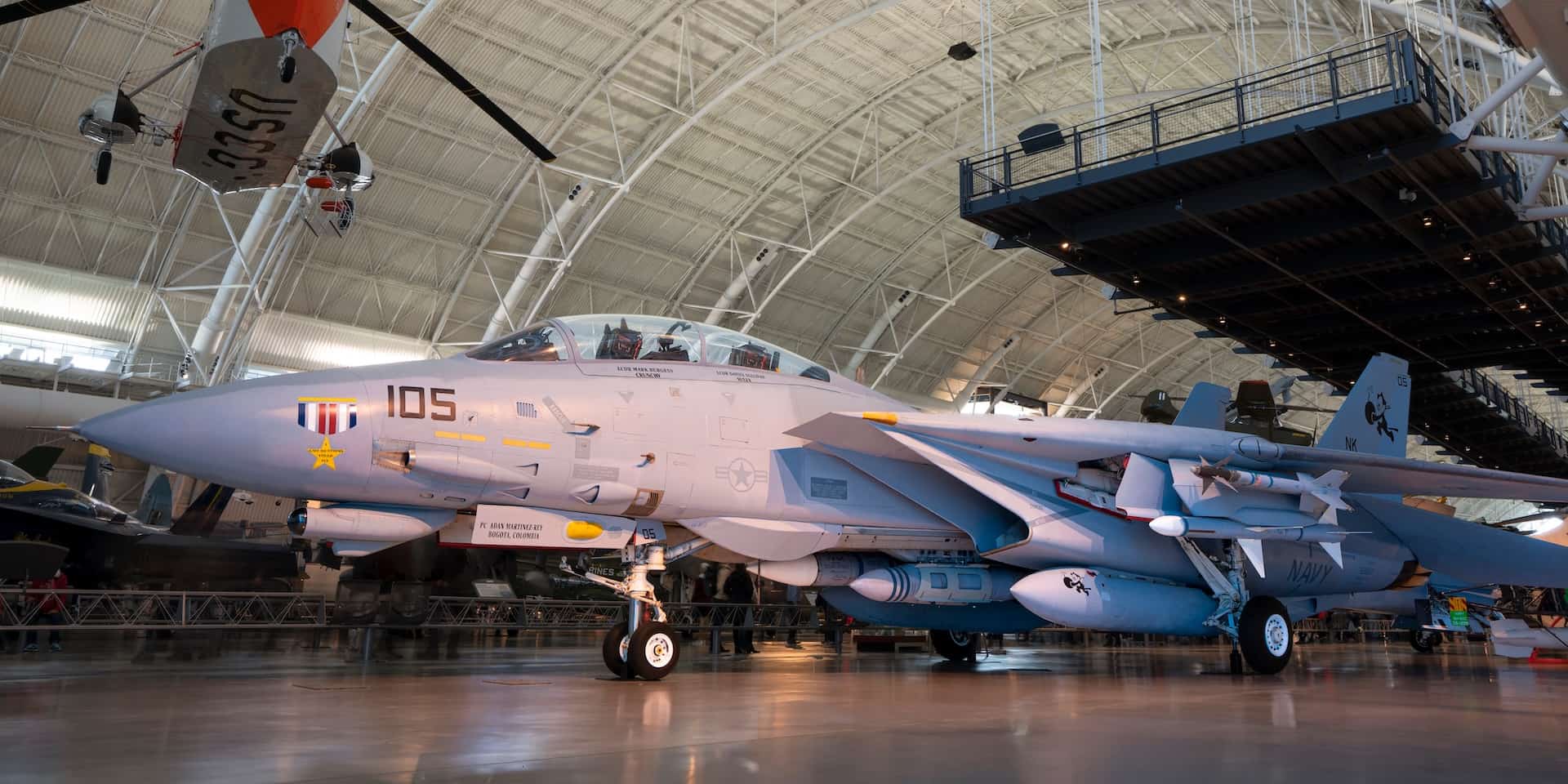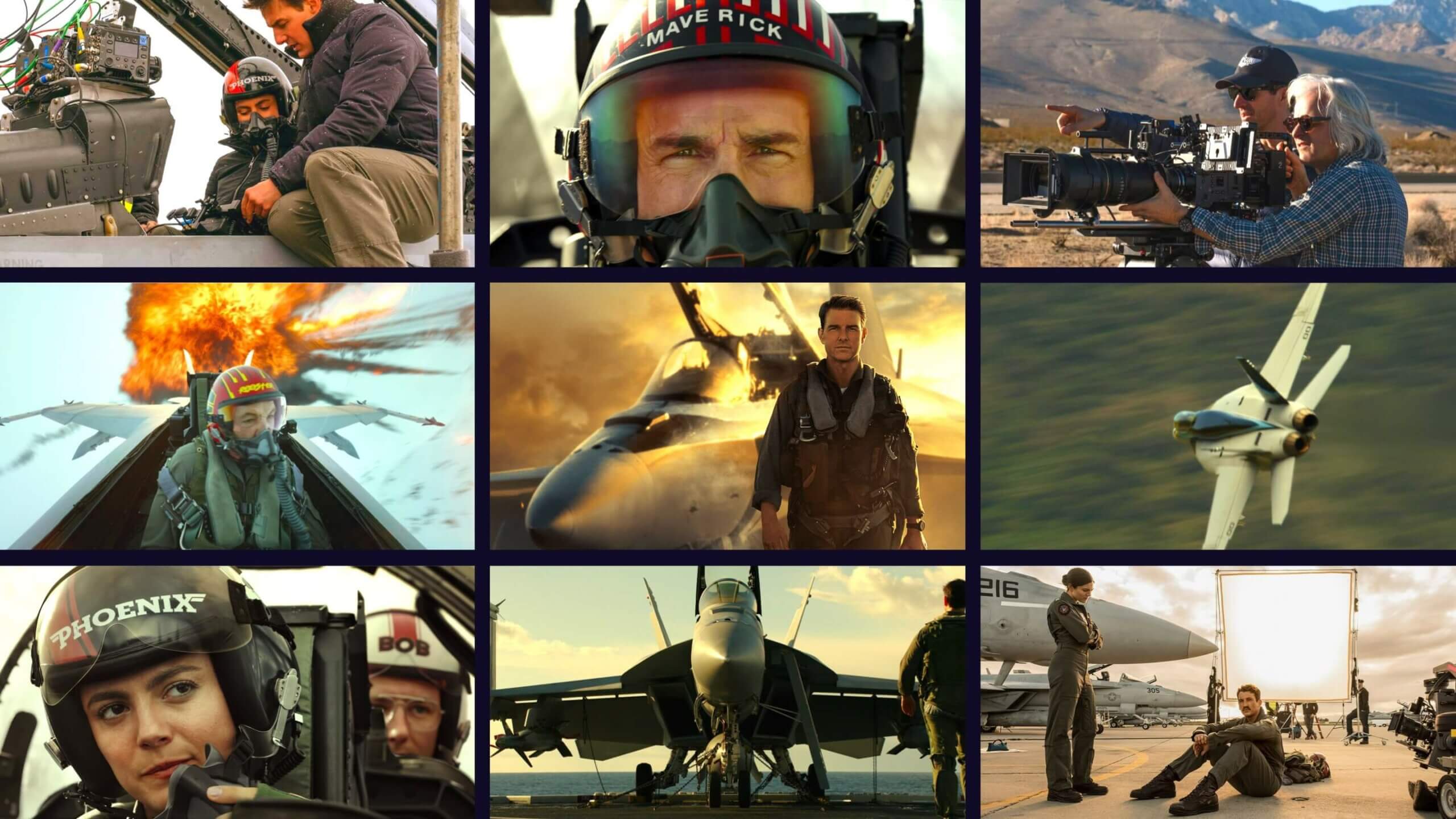At this time, the theatrical experience is fighting to stay relevant among streaming giants. Top Gun: Maverick made an undeniable case for getting back into theaters. The film was praised by the likes of Quentin Tarantino. It received a five-minute standing ovation at the Cannes Film Festival. So, what went into creating a film that sparked this response? Let’s take a look behind the scenes of Top Gun: Maverick.
Top Gun Maverick Behind the Scenes
Stunt preparation
One of the biggest stories from behind the scenes of Top Gun: Maverick is the real inflight scenes that were shot. This meant actors getting into real Boeing F/A 18F Super Hornet aircrafts.
Actors had to endure a rigorous training program to prepare for the film. This was primarily for their own safety. But it also helped them look, sound, and act like real fighter pilots.
This included experiencing cabin pressure, comfortability in small spaces in high stress, and other skills needed for smooth and safe stunt operations.
Top Gun Behind the Scenes • Navy Training
The Navy mandates emergency underwater survival training to even be allowed on one of these aircrafts in operation. This training is no joke. Check out the extent of this water survival training in the excerpt from the Top Gun: Maverick featurette below.
Top Gun behind the scenes • Actor Training Program
All of this training had to be executed before any production actually took place. Once training was completed, production was a whole other beast to tackle. In an interview with Men’s Journal, actor Miles Teller recalls the making of Top Gun Maverick.
“There was a lot that went into each of the flight scenes. Before we would shoot, we would go into a briefing like the military does, going over each movement and stunt very specifically–what the altitude is going to be, what our speed is going to be. The stakes are incredibly high, even if you are not actually flying the fighter jet, you need to be aware of every movement, because if the camera is pointed at you and you are even a millisecond off as far as timing, the whole scene is a bust. That means everything from the motion to the eye-line has to be perfect.”
— Miles Teller
After all of the actors' commitment and dedication to preparing for their role and stunts, it’s paramount to execute the capturing of their performances in an equally critical way. Let’s take a look at the making of Maverick on the cinematography side.
Behind the Scenes Top Gun Maverick
Aerial cinematography
A key ingredient to the magic of Top Gun: Maverick is capturing aerial scenes live in action. What better way to capture the intense experience of a fighter pilot than by putting six IMAX-quality cameras within the cockpit?
These aerial cinematography camera systems were created through an intensive process to ensure both safety and effectiveness at capturing the exact shots needed for the film.
Top Gun Behind the Scenes • Aerial camera system for flying scenes
The incredible cockpit camera-system had to be specially installed into the pre-existing threaded holes of the F/A-18 by 1st AC Dan Ming and key grip Trevor Fulks. These various camera angles from within the cockpit gave the editor the necessary shots to create an epic, thrilling experience for the audience.
1st AC Dan Ming installing front facing cockpit cameras • Top Gun Maverick BTS
Up to four cameras could be mounted on the single designated shooting jet for exterior shots. These included two under the belly, one under the wing, and one on the nose.
The most iconic shots of Top Gun: Maverick show the actors enduring true, in-flight G-force captured by these brilliant camera systems. As you can see in the behind the scenes video below, every aspect of the aerial cinematography was properly thought out and executed.
Top Gun Behind the Scenes • Real Flying. Real G-Forces. Pure Adrenaline.
As the stunts and cinematography suggests, the goal of the film was to be as real as possible to real life military aviation. A huge part of creating this authenticity in film is also the responsibility of production design.
Related Posts
Top Gun 2 Behind the Scenes
Production Design
The F/A-18 is undoubtedly the jet we see the most in the film. But perhaps what is more iconic is the Dark Star — the prototype aircraft we see Maverick fly to reach Mach 10 speeds in the first scene of the film.
Top Gun Behind the Scenes • The Dark Star
This is again where Top Gun: Maverick goes above and beyond normal film production. In addition to the film production design, they enlisted the help of true aircraft designers at the cutting edge of aviation design and technology.
Because the Dark Star in the film is a military prototype, the aircraft was designed with Skunk Works and Lockheed Martin — a legendary aircraft manufacturing and design company.
Behind the Scenes Top Gun Maverick
The result was not only for show. It was important to establish up front that Maverick was still on the cutting edge of aviation technology. The Dark Star in its futuristic and beautiful design helped tell this story and bring the Top Gun narrative into the future. Check out director Joseph Kosinski break down this opening scene and its importance in the video below.
Making of Top Gun 2 • Anatomy of a Scene
As you can see from the video above, even the suit that Maverick is wearing in the scene is real. It is based and designed off of a real high-altitude pressure suit that is used by pilots of the extreme high altitude U-2 aircrafts.
Securing the other aircrafts seen in the film was no easy feat. Production designer Jeremy Hindle worked tirelessly with the immense support of the Navy enlisted to help the film production.
This included securing a range of aircrafts from a Boeing F/A-18/F to a near impossible to get F-14.
In fact, since the F-14 had been decommissioned by the U.S., the only one available was secured from the San Diego Air and Space Museum. This was vital for the call back in the climax of the film.

Grumman F-14D(R) Tomcat • National Air and Space Museum
One of the more iconic production design elements from Top Gun is the fighter pilot call sign dawned on each of the pilots’ helmets. Hindle worked with Kosinski as well as an illustrator and graphic artist to design each helmet.
Each design had to tell the story of each character.

Making of Top Gun Maverick • Call signs & helmets
Every aspect of Top Gun: Maverick was meticulously planned, prepped, and executed. The goal was to capture the most true-to-life fighter pilot experience possible. Real stunts and high speed flights were captured by specially made aerial camera-systems.
Real aircrafts were secured and prototypes were created from research backed designs. Going behind the scenes of Top Gun: Maverick reveals that the true magic of the film was its uncompromising commitment to be an accurate love letter to aviation.
Up Next
What is Aerial Cinematography?
Top Gun Maverick undoubtedly pushed the envelope for what can be achieved through aerial cinematography. But how has it been done in the past and why is it important to cinematic storytelling? Check out our next article to find out.
Up Next: Aerial Cinematography →
Showcase your vision with elegant shot lists and storyboards.
Create robust and customizable shot lists. Upload images to make storyboards and slideshows.
